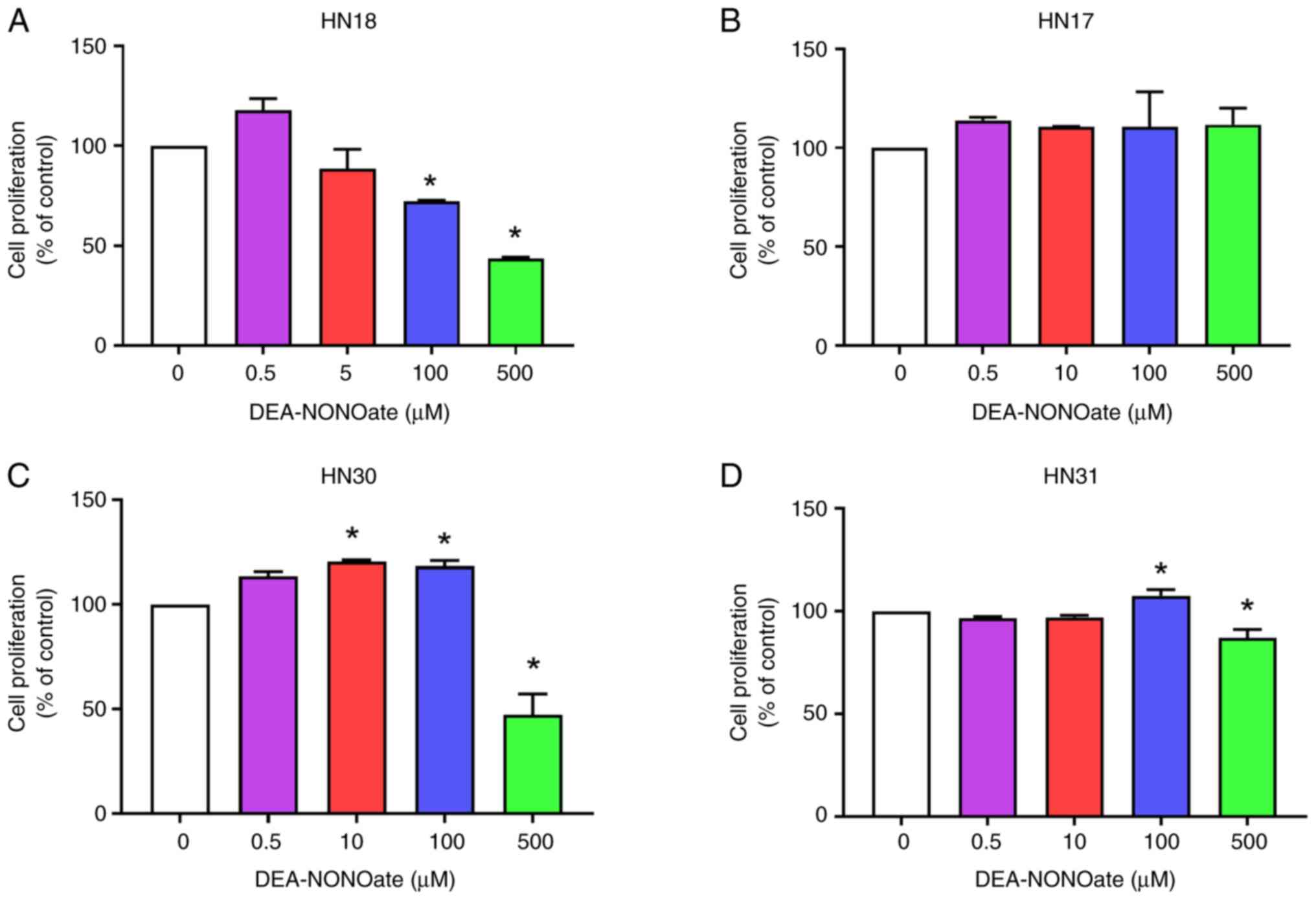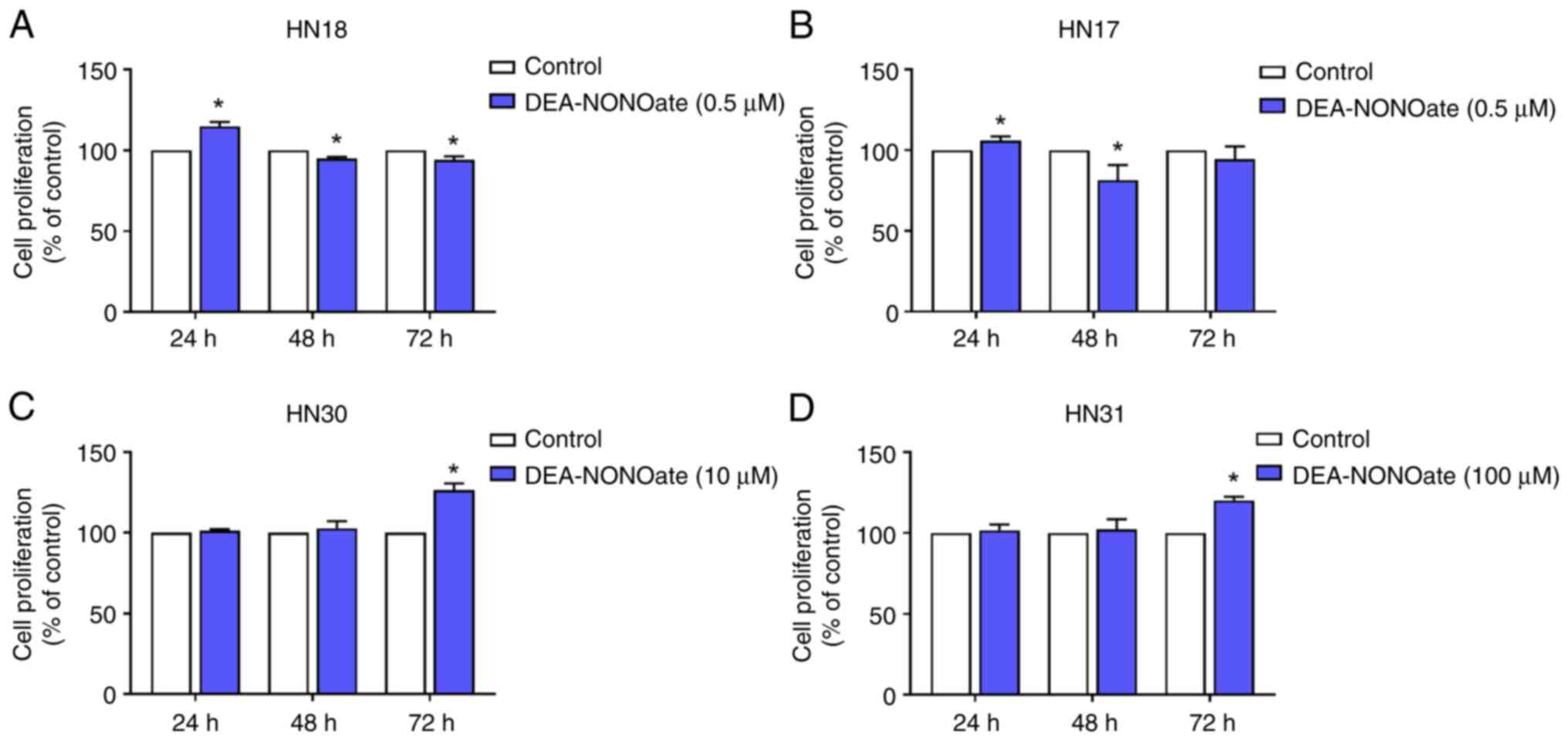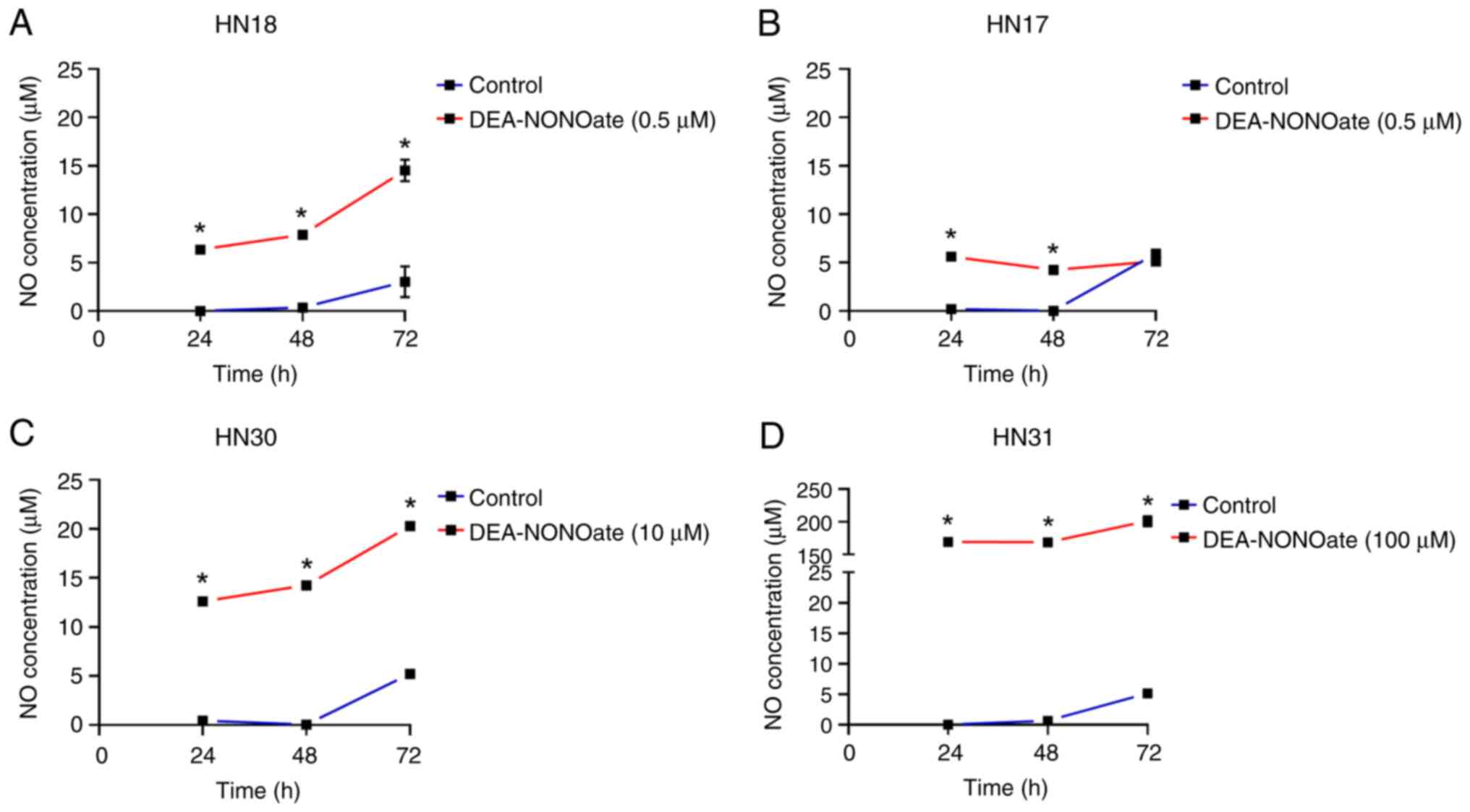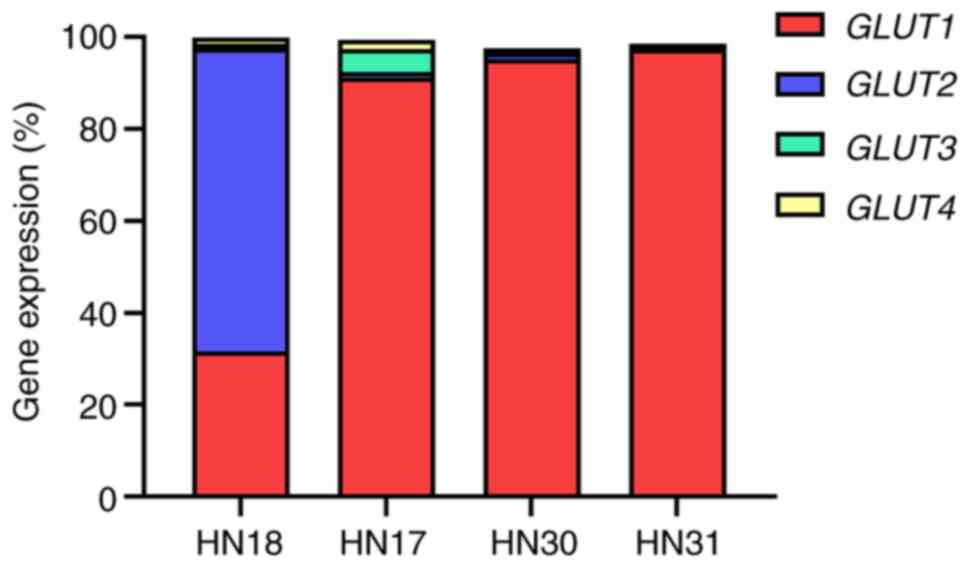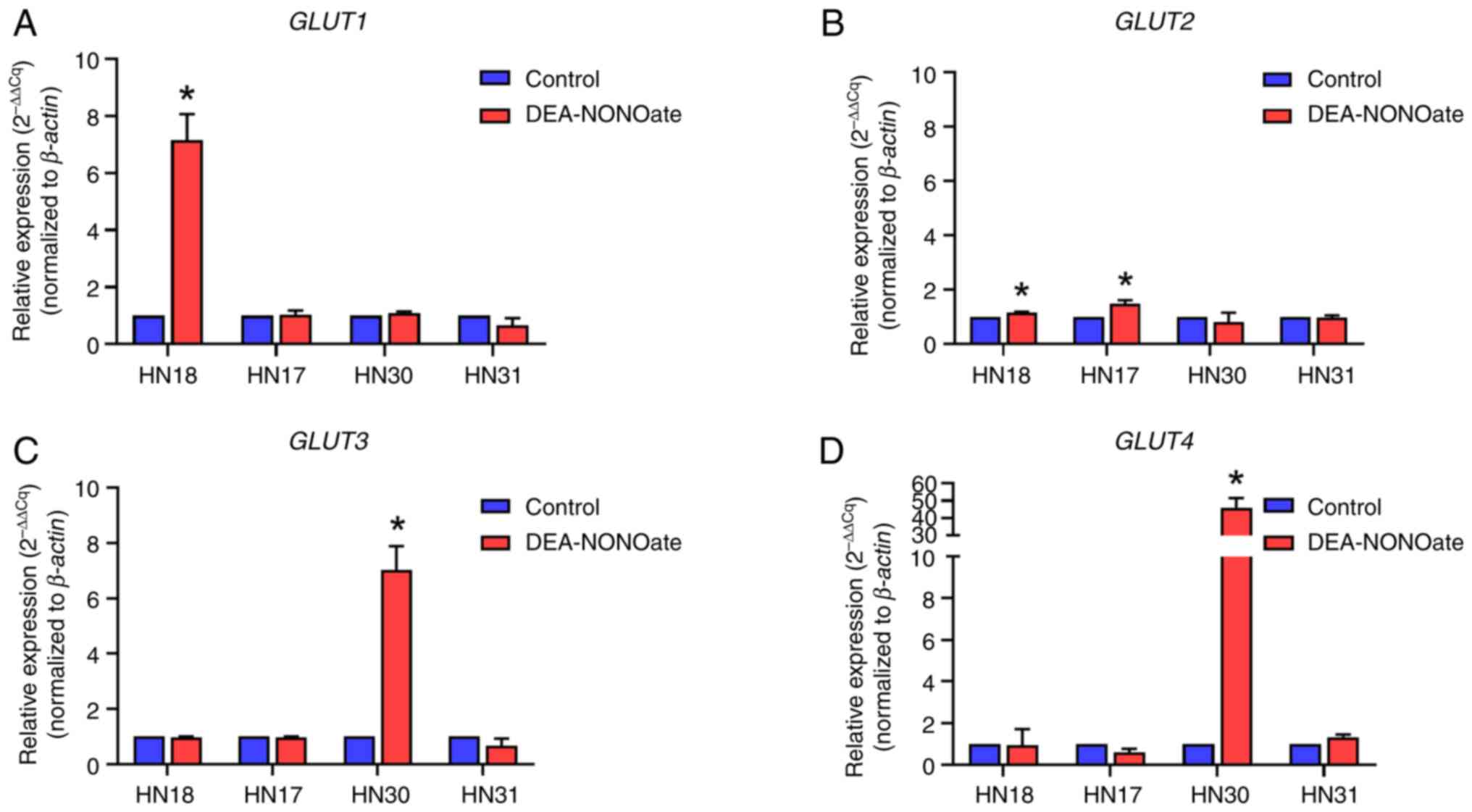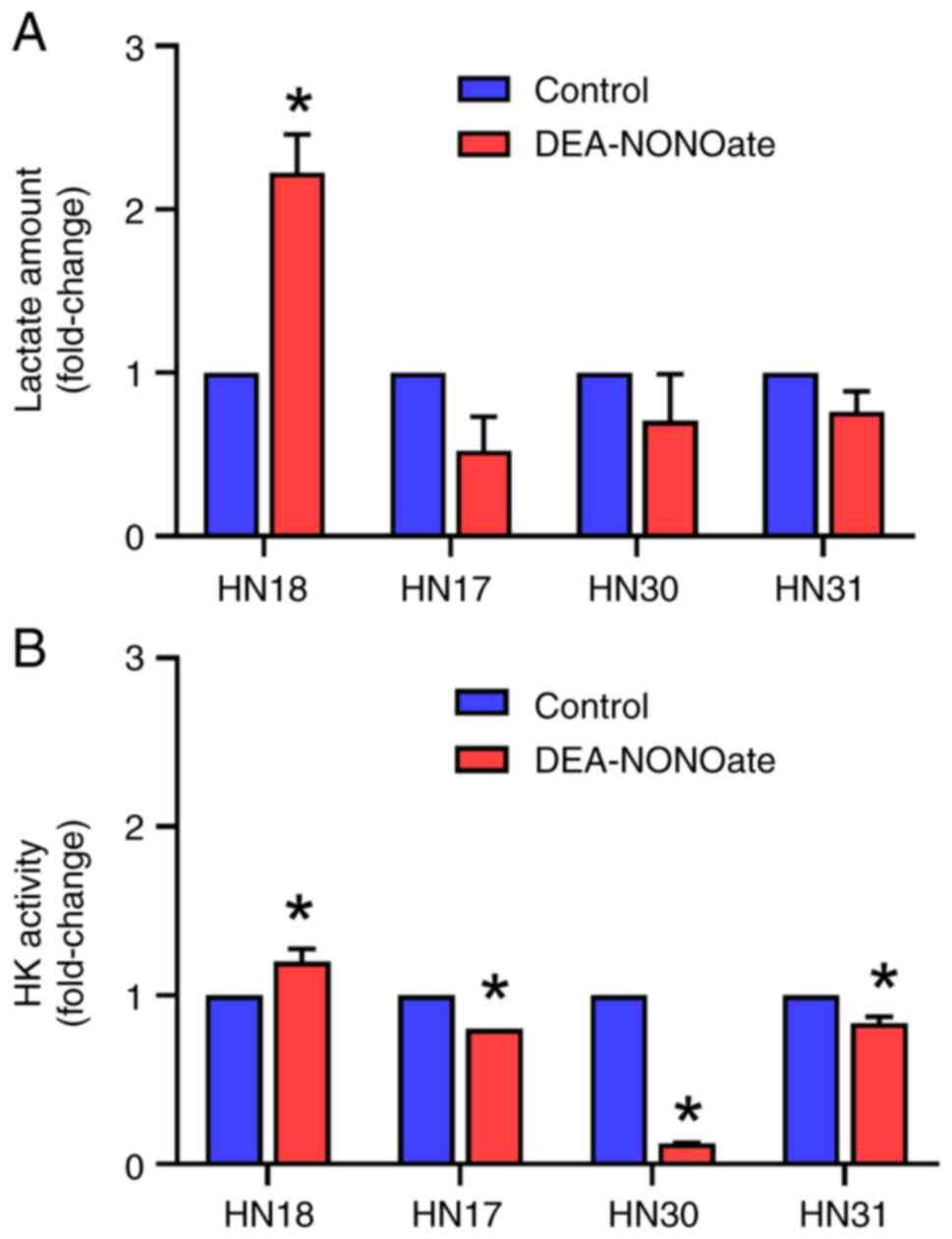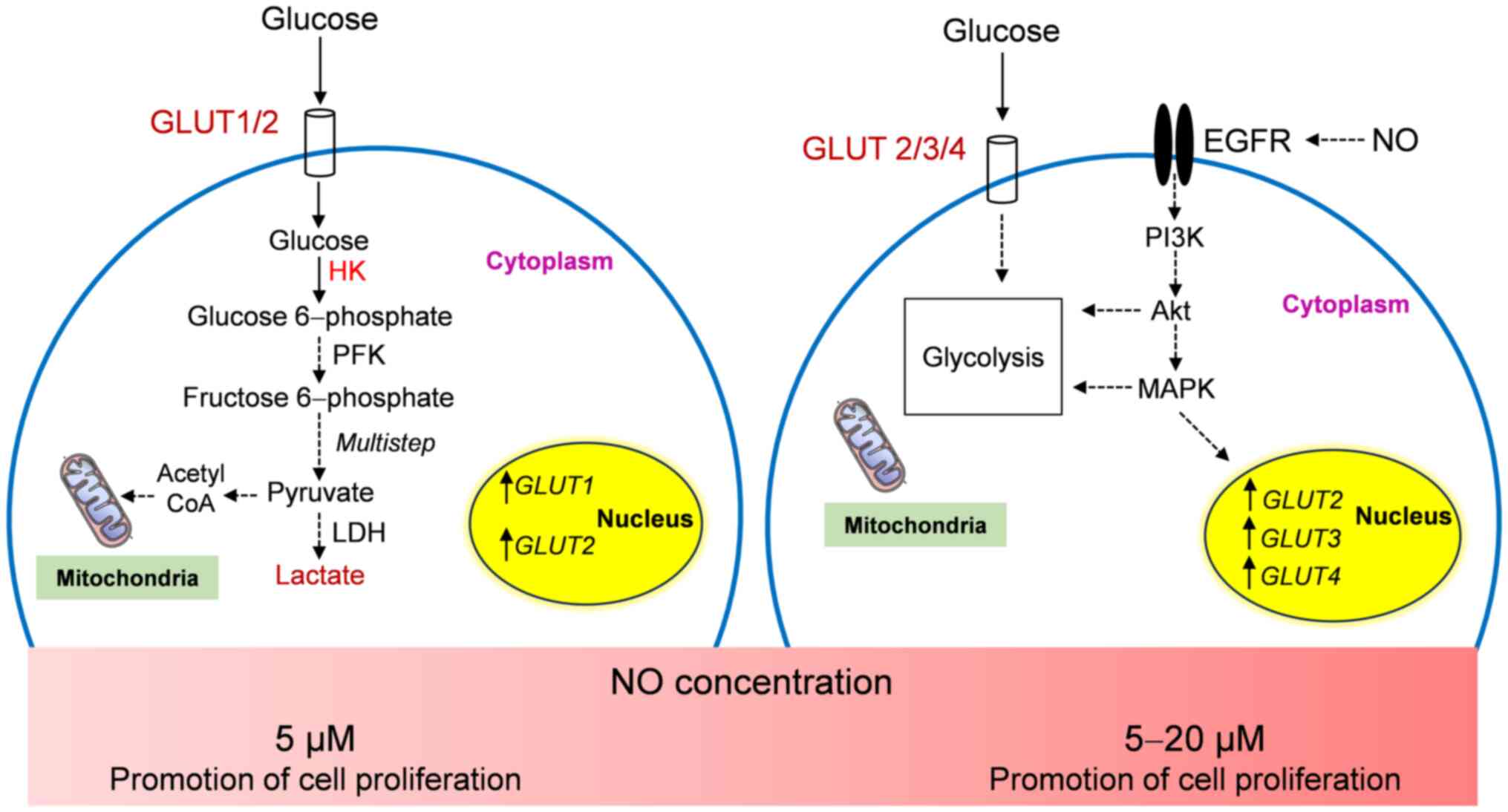|
1
|
Argiris A, Karamouzis MV, Raben D and
Ferris RL: Head and neck cancer. Lancet. 371:1695–1709.
2008.PubMed/NCBI View Article : Google Scholar
|
|
2
|
Ma L and Zong X: Metabolic symbiosis in
chemoresistance: Refocusing the role of aerobic glycolysis. Front
Oncol. 10(5)2020.PubMed/NCBI View Article : Google Scholar
|
|
3
|
Visioli F, Wang Y, Alam GN, Ning Y, Rados
PV, Nor JE and Polverini PJ: Glucose-regulated protein 78 (Grp78)
confers chemoresistance to tumor endothelial cells under acidic
stress. PLoS One. 9(e101053)2014.PubMed/NCBI View Article : Google Scholar
|
|
4
|
Warburg O: The metabolism of carcinoma
cells. J Cancer Res. 9:148–163. 1925.
|
|
5
|
Szablewski L: Glucose transporters as
markers of diagnosis and prognosis in cancer diseases. Oncol Rev.
16(561)2022.PubMed/NCBI View Article : Google Scholar
|
|
6
|
Holman GD: Structure, function and
regulation of mammalian glucose transporters of the SLC2 family.
Pflugers Arch. 472:1155–1175. 2020.PubMed/NCBI View Article : Google Scholar
|
|
7
|
Gould GW and Holman GD: The glucose
transporter family: Structure, function and tissue-specific
expression. Biochem J. 295 (Pt 2):329–341. 1993.PubMed/NCBI View Article : Google Scholar
|
|
8
|
Barbosa AM and Martel F: Targeting glucose
transporters for breast cancer therapy: The effect of natural and
synthetic compounds. Cancers (Basel). 12(154)2020.PubMed/NCBI View Article : Google Scholar
|
|
9
|
Ding X, Liu J, Liu T, Ma Z, Wen D and Zhu
J: miR-148b inhibits glycolysis in gastric cancer through targeting
SLC2A1. Cancer Med. 6:1301–1310. 2017.PubMed/NCBI View Article : Google Scholar
|
|
10
|
Gou Q, Dong C, Jin J, Liu Q, Lu W, Shi J
and Hou Y: PPARα agonist alleviates tumor growth and
chemo-resistance associated with the inhibition of glucose
metabolic pathway. Eur J Pharmacol. 863(172664)2019.PubMed/NCBI View Article : Google Scholar
|
|
11
|
Xiao H, Wang J, Yan W, Cui Y, Chen Z, Gao
X, Wen X and Chen J: GLUT1 regulates cell glycolysis and
proliferation in prostate cancer. Prostate. 78:86–94.
2018.PubMed/NCBI View Article : Google Scholar
|
|
12
|
Yu M, Yongzhi H, Chen S, Luo X, Lin Y,
Zhou Y, Jin H, Hou B, Deng Y, Tu L and Jian Z: The prognostic value
of GLUT1 in cancers: A systematic review and meta-analysis.
Oncotarget. 8:43356–43367. 2017.PubMed/NCBI View Article : Google Scholar
|
|
13
|
Simpson IA, Dwyer D, Malide D, Moley KH,
Travis A and Vannucci SJ: The facilitative glucose transporter
GLUT3: 20 years of distinction. Am J Physiol Endocrinol Metab.
295:E242–E253. 2008.PubMed/NCBI View Article : Google Scholar
|
|
14
|
Libby CJ, Gc S, Benavides GA, Fisher JL,
Williford SE, Zhang S, Tran AN, Gordon ER, Jones AB, Tuy K, et al:
A role for GLUT3 in glioblastoma cell invasion that is not
recapitulated by GLUT1. Cell Adh Migr. 15:101–115. 2021.PubMed/NCBI View Article : Google Scholar
|
|
15
|
He Z, Chen D, Wu J, Sui C, Deng X, Zhang
P, Chen Z, Liu D, Yu J, Shi J, et al: Yes associated protein 1
promotes resistance to 5-fluorouracil in gastric cancer by
regulating GLUT3-dependent glycometabolism reprogramming of
tumor-associated macrophages. Arch Biochem Biophys.
702(108838)2021.PubMed/NCBI View Article : Google Scholar
|
|
16
|
Ali A, Levantini E, Fhu CW, Teo JT,
Clohessy JG, Goggi JL, Wu CS, Chen L, Chin TM and Tenen DG:
CAV1-GLUT3 signaling is important for cellular energy and can be
targeted by atorvastatin in non-small cell lung cancer.
Theranostics. 9:6157–6174. 2019.PubMed/NCBI View Article : Google Scholar
|
|
17
|
Pliszka M and Szablewski L: Glucose
Transporters as a target for anticancer therapy. Cancers (Basel).
13(4184)2021.PubMed/NCBI View Article : Google Scholar
|
|
18
|
Daskalow K, Pfander D, Weichert W, Rohwer
N, Thelen A, Neuhaus P, Jonas S, Wiedenmann B, Benckert C and
Cramer T: Distinct temporospatial expression patterns of
glycolysis-related proteins in human hepatocellular carcinoma.
Histochem Cell Biol. 132:21–31. 2009.PubMed/NCBI View Article : Google Scholar
|
|
19
|
Godoy A, Ulloa V, Rodriguez F, Reinicke K,
Yanez AJ, Garcia Mde L, Medina RA, Carrasco M, Barberis S, Castro
T, et al: Differential subcellular distribution of glucose
transporters GLUT1-6 and GLUT9 in human cancer: Ultrastructural
localization of GLUT1 and GLUT5 in breast tumor tissues. J Cell
Physiol. 207:614–627. 2006.PubMed/NCBI View Article : Google Scholar
|
|
20
|
Masters C: Cellular differentiation and
the microcompartmentation of glycolysis. Mech Ageing Dev. 61:11–22.
1991.PubMed/NCBI View Article : Google Scholar
|
|
21
|
Ganapathy-Kanniappan S and Geschwind JF:
Tumor glycolysis as a target for cancer therapy: Progress and
prospects. Mol Cancer. 12(152)2013.PubMed/NCBI View Article : Google Scholar
|
|
22
|
Lopez-Sanchez LM, Aranda E and
Rodriguez-Ariza A: Nitric oxide and tumor metabolic reprogramming.
Biochem Pharmacol. 176(113769)2020.PubMed/NCBI View Article : Google Scholar
|
|
23
|
Mintz J, Vedenko A, Rosete O, Shah K,
Goldstein G, Hare JM, Ramasamy R and Arora H: Current advances of
nitric oxide in cancer and anticancer therapeutics. Vaccines
(Basel). 9(94)2021.PubMed/NCBI View Article : Google Scholar
|
|
24
|
Choudhari SK, Chaudhary M, Bagde S,
Gadbail AR and Joshi V: Nitric oxide and cancer: A review. World J
Surg Oncol. 11(118)2013.PubMed/NCBI View Article : Google Scholar
|
|
25
|
Selvido ID, Koontongkaew S, Kokilakanit P,
Sacharoen A, Korsuwannawong S and Utispan K: High nitric
oxide-adapted head and neck cancer cell lines demonstrate altered
autophagy and apoptosis. J Dent Sci. 19:855–864. 2024.PubMed/NCBI View Article : Google Scholar
|
|
26
|
Utispan K and Koontongkaew S: High nitric
oxide adaptation in isogenic primary and metastatic head and neck
cancer cells. Anticancer Res. 40:2657–2665. 2020.PubMed/NCBI View Article : Google Scholar
|
|
27
|
Li L, Zhu L, Hao B, Gao W, Wang Q, Li K,
Wang M, Huang M, Liu Z, Yang Q, et al: iNOS-derived nitric oxide
promotes glycolysis by inducing pyruvate kinase M2 nuclear
translocation in ovarian cancer. Oncotarget. 8:33047–33063.
2017.PubMed/NCBI View Article : Google Scholar
|
|
28
|
Cardinali M, Pietraszkiewicz H, Ensley JF
and Robbins KC: Tyrosine phosphorylation as a marker for aberrantly
regulated growth-promoting pathways in cell lines derived from head
and neck malignancies. Int J Cancer. 61:98–103. 1995.PubMed/NCBI View Article : Google Scholar
|
|
29
|
Utispan K and Koontongkaew S: Mucin 1
regulates the hypoxia response in head and neck cancer cells. J
Pharmacol Sci. 147:331–339. 2021.PubMed/NCBI View Article : Google Scholar
|
|
30
|
Rao X, Huang X, Zhou Z and Lin X: An
improvement of the 2^(-delta delta CT) method for quantitative
real-time polymerase chain reaction data analysis. Biostat
Bioinforma Biomath. 3:71–85. 2013.PubMed/NCBI
|
|
31
|
Ying L and Hofseth LJ: An emerging role
for endothelial nitric oxide synthase in chronic inflammation and
cancer. Cancer Res. 67:1407–1410. 2007.PubMed/NCBI View Article : Google Scholar
|
|
32
|
Thomas DD, Ridnour LA, Espey MG, Donzelli
S, Ambs S, Hussain SP, Harris CC, DeGraff W, Roberts DD, Mitchell
JB and Wink DA: Superoxide fluxes limit nitric oxide-induced
signaling. J Biol Chem. 281:25984–25993. 2006.PubMed/NCBI View Article : Google Scholar
|
|
33
|
Gould GW, Thomas HM, Jess TJ and Bell GI:
Expression of human glucose transporters in Xenopus oocytes:
Kinetic characterization and substrate specificities of the
erythrocyte, liver, and brain isoforms. Biochemistry. 30:5139–5145.
1991.PubMed/NCBI View Article : Google Scholar
|
|
34
|
Pervin S, Singh R, Hernandez E, Wu G and
Chaudhuri G: Nitric oxide in physiologic concentrations targets the
translational machinery to increase the proliferation of human
breast cancer cells: Involvement of mammalian target of
rapamycin/eIF4E pathway. Cancer Res. 67:289–299. 2007.PubMed/NCBI View Article : Google Scholar
|
|
35
|
Ridnour LA, Barasch KM, Windhausen AN,
Dorsey TH, Lizardo MM, Yfantis HG, Lee DH, Switzer CH, Cheng RY,
Heinecke JL, et al: Nitric oxide synthase and breast cancer: Role
of TIMP-1 in NO-mediated Akt activation. PLoS One.
7(e44081)2012.PubMed/NCBI View Article : Google Scholar
|
|
36
|
Switzer CH, Glynn SA, Cheng RY, Ridnour
LA, Green JE, Ambs S and Wink DA: S-nitrosylation of EGFR and Src
activates an oncogenic signaling network in human basal-like breast
cancer. Mol Cancer Res. 10:1203–1215. 2012.PubMed/NCBI View Article : Google Scholar
|
|
37
|
Chen CL, Chang YC and Hsiao M: Rab GTPases
accelerates GLUT4 translocation in colorectal cancer progression by
Insulin/IGF system. FASEB J. 34:1. 2020.
|



